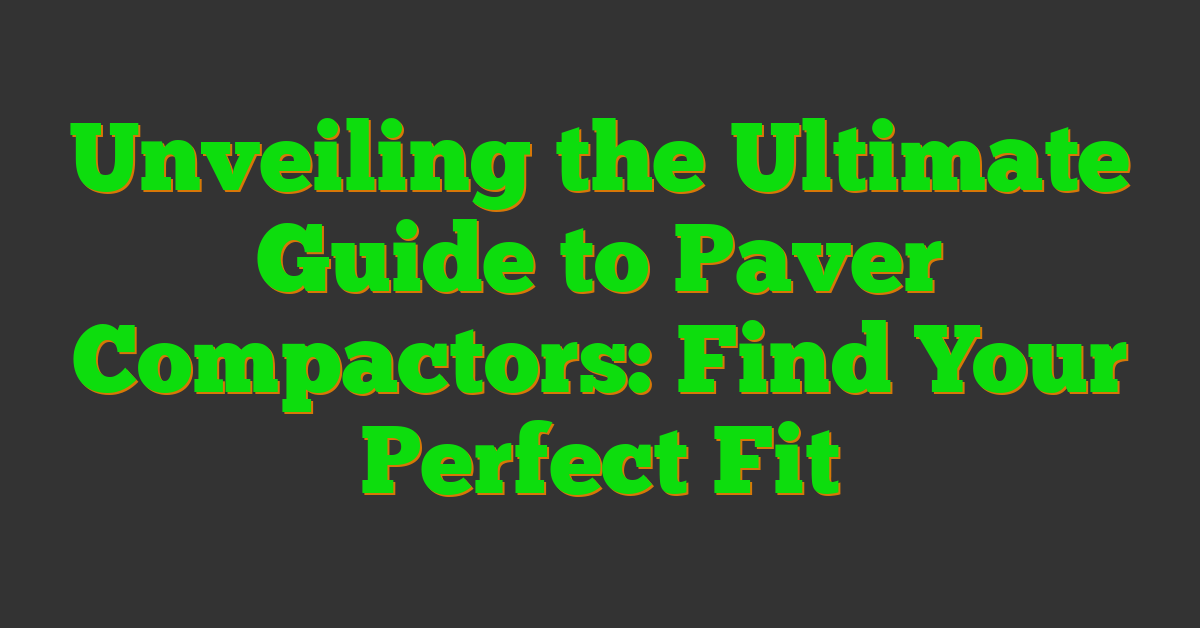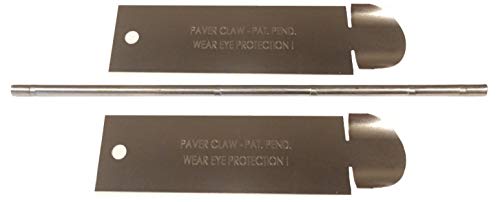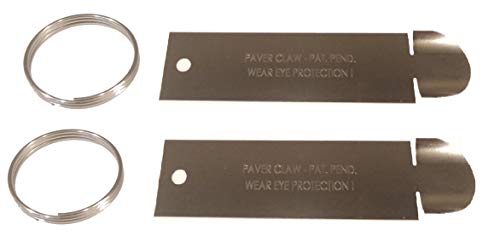When it comes to laying pavers, choosing the right compactor size is crucial for achieving a durable and visually appealing result. The size of the compactor plays a significant role in ensuring proper compaction of the paver base and the interlocking pavers themselves. In our upcoming article, we’ll explore the key factors to consider when selecting the ideal compactor size for your paver project.

Whether you’re a seasoned contractor or a DIY enthusiast, understanding the relationship between compactor size and paver type is essential for a successful installation. We’ll discuss how different sizes of compactors can impact the efficiency and quality of your paver project. Stay tuned as we delve into the world of compactors and unveil valuable insights to help you make informed decisions for your next paving endeavor.
Understanding Paver Installation
The Role of Compactors in Paver Projects
As landscape designers, we know the crucial role compactors play in achieving successful paver installations. Compactors are essential tools that help to compress the paver base, ensuring stability and preventing shifting over time. Proper compaction not only enhances the structural integrity of the paver surface but also minimizes the risk of pavers becoming uneven or unevenly settled.
Types of Pavers and Their Requirements
When it comes to different types of pavers, each has its unique requirements for compaction. For instance, concrete pavers require a specific amount of compaction to ensure they lock together securely. On the other hand, natural stone pavers may need a gentler compaction approach to prevent breakage or damage during the installation process. Understanding the characteristics of the pavers being used is essential in determining the appropriate compactor size for the project at hand.
Choosing the Right Size Compactor
Assessing the Scale of Your Paving Project
When determining the appropriate compactor size for your paver project, “we consider the scale of the area,” as this plays a crucial role in selecting the right equipment. For larger projects covering extensive surfaces, opting for a heavier compactor with a wider plate ensures efficient compaction, saving us time and effort during the construction process. Conversely, for smaller-scale projects or intricate spaces, a lighter compactor might be more maneuverable and suitable for achieving proper compaction in tighter areas.
The Impact of Paver Size and Material on Compactor Choice
Another vital factor “we keep in mind is the size and material” of the pavers being used. Larger and thicker pavers require a compactor with higher compaction force to properly settle them into the base material and create a stable surface. Moreover, different paver materials, such as concrete or natural stone, have varying compaction requirements, influencing our decision when selecting the most suitable compactor for the job. By matching the compactor size and force to the specific paver type, “we ensure a durable and aesthetically pleasing outcome” for our landscaping projects.
Key Features to Look for in a Paver Compactor
Plate Size and Compaction Force
When selecting a paver compactor, we focus on two critical aspects: plate size and compaction force. The plate size determines the coverage area during compaction, affecting the efficiency of the process. Opting for a larger plate size is advantageous for larger projects as it enables us to compact more area in less time, boosting productivity.
Moreover, the compaction force of the machine is crucial for achieving the required density in the paver base. We consider the force output in relation to the type of pavers being installed – heavier materials like concrete require higher compaction force to ensure a stable and durable surface. Matching the compaction force to the paver type is essential for successful and long-lasting results.
Maneuverability and Ease of Use
In our landscape design projects, maneuverability and ease of use are key factors when choosing a paver compactor. We look for compactors that are user-friendly and easy to maneuver, especially in tight or intricate spaces. A machine with excellent maneuverability allows us to navigate around obstacles with precision, ensuring uniform compaction across the entire project.
Additionally, the ease of use of the compactor contributes to our efficiency on-site. Simple controls, ergonomic design, and intuitive operation are essential features we seek to streamline the compaction process. By prioritizing maneuverability and ease of use in our choice of paver compactors, we enhance our productivity and deliver top-quality results in every project.
Best Practices for Compacting Pavers
Proper Compaction Techniques
When it comes to compacting pavers for our landscape design projects, we know that using the right techniques is crucial for achieving a durable and aesthetically pleasing finish. We always make sure to start with a proper base preparation, ensuring it’s stable and well-drained. By compacting the base layer in even passes, we can avoid uneven settling and potential damage to the pavers over time. Our attention to detail during compaction helps prevent issues such as surface dips or shifting, ensuring a long-lasting and visually appealing result.
Common Mistakes to Avoid
In our experience as landscape designers, we’ve encountered some common mistakes that can impact the effectiveness of paver compaction. One of the key errors we’ve observed is inadequate compaction of the base material, which can lead to instability and uneven surfaces. Rushing the compaction process or failing to compact the edges properly are also pitfalls to avoid, as they can compromise the overall integrity of the paved area. By taking the time to compact the pavers correctly and paying attention to detail, we ensure that our projects stand the test of time and maintain their beauty for years to come.
Top Compactor Models for Paver Projects
As landscape designers, we understand the critical role of choosing the right compactor size for paver projects. Proper compaction is key to ensuring the durability and aesthetic appeal of the finished landscape. Let’s explore some of the top compactor models suitable for various paver projects:
Electric vs. Gas-Powered Compactors
When considering compactors for paver projects, we often evaluate the choice between electric and gas-powered models. Electric compactors are ideal for smaller projects or areas where noise levels need to be minimal. They are eco-friendly and easy to maintain. In contrast, gas-powered compactors provide more power and are suitable for larger projects that require increased compaction force. Understanding the specific needs of the project helps us determine the most suitable power source for the compactor.
Small-Scale Models for Home Use
For homeowners looking to enhance their outdoor spaces with paver installations, small-scale compactors are often the preferred choice. These compactors are lightweight, easy to maneuver, and perfect for DIY projects. They offer sufficient compaction force for smaller areas without compromising on quality. Our focus on using compactors tailored to the scale of the project ensures efficient and effective compaction for residential landscapes.
Professional-Grade Compactors for Larger Projects
When undertaking large-scale paver projects, such as commercial installations or extensive landscape designs, professional-grade compactors are indispensable. These heavy-duty models provide the necessary compaction force to ensure the stability and longevity of the paved surfaces. We rely on professional-grade compactors for their durability, efficiency, and precision in achieving optimal compaction levels across large project areas.
By considering factors such as power source, project scale, and specific requirements, we can select the right compactor model that aligns with the needs of each unique paver project. With a focus on quality compaction and meticulous attention to detail, we ensure the successful completion of landscape design projects with stunning and long-lasting paver installations.
Conclusion
Choosing the correct compactor size for your paver projects is crucial for achieving lasting results. The compactor plays a significant role in ensuring proper compaction of the paver base and interlocking pavers, ultimately stabilizing the surface. By understanding the varying compaction requirements for different paver types and considering the scale of your project, you can select a compactor that meets your specific needs. Remember to match the compactor size and force to the paver types you are working with for successful installations. With the right compactor features and considerations in mind, you can embark on your landscape design projects with confidence and efficiency.
« Why Your Pavers Keep Sinking & How to Stop It: Expert Tips Revealed 5 Surprising Reasons Your Pavers Are Sinking – Secrets Revealed »













